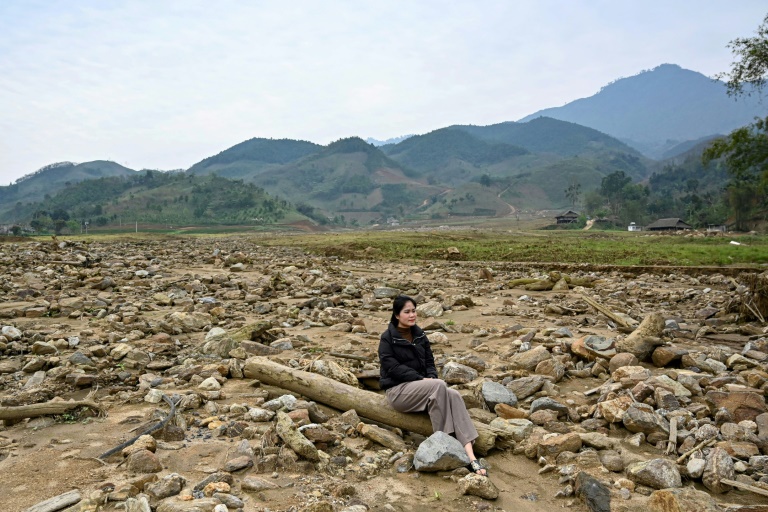World
New Model Unveils Key Factors in California Landslide Threats

A recent study has revealed critical insights into the factors driving landslides, highlighting the roles of rainfall intensity, soil saturation, and snowmelt. Researchers from Northwestern University and the University of California, Los Angeles (UCLA) have developed a new predictive model that integrates various hydrological processes with machine learning techniques. This model was tested on over 600 landslides that occurred in California during an extreme weather period in early 2023.
This innovative approach marks a departure from traditional landslide prediction methods, which primarily focus on rainfall intensity. Instead, the new framework combines multiple water-related factors to better understand the underlying conditions that lead to landslides. By integrating diverse data sources, the research team aims to enhance early warning systems and inform hazard planning in regions susceptible to such geological events.
Understanding the ‘Parade’ of Storms
During the winter of 2022-23, California experienced an unprecedented series of atmospheric rivers, leading to catastrophic flooding and widespread landslides. The research team employed a community-developed computer model to simulate the movement of water within the environment. This model accounted for various factors, including rain infiltration, surface runoff, evaporation, and the melting of snow and ice.
The scientists analyzed a range of data, such as meteorological conditions, geographical features, and historical information. From this, they developed a metric called “water balance status” (WBS), which assesses the saturation levels of specific areas. A positive WBS indicates that the ground is unable to absorb or manage excess water, thereby increasing the potential for landslides.
Key Pathways to Landslides
Through their analysis, the researchers identified three primary pathways that contributed to the landslides in California: intense rainfall, rain on already saturated soils, and melting snow or ice. The study revealed that approximately 32% of the landslides were directly caused by heavy downpours. Additionally, around 53% occurred when moderate rain fell on soils that were already saturated from previous storms, and 15% were linked to snow or ice thaw accelerated by rain.
Crucially, the research indicated that a significant majority of the landslides—about 89%—occurred in areas where the WBS was positive. This correlation validates the effectiveness of the WBS metric in identifying conditions conducive to landslides.
The findings of this study are detailed in the journal Geophysical Research Letters, under the title “Mixed hydrometeorological processes explain regional landslide potential.” This research not only advances scientific understanding of landslide mechanisms but also has practical implications for improving resilience against such natural disasters.
As climate change continues to influence weather patterns, enhancing predictive models like this one will be crucial for mitigating risks associated with landslides. The integration of machine learning and hydrological data offers a promising avenue for protecting vulnerable regions and potentially saving lives.
-

 Science4 months ago
Science4 months agoToyoake City Proposes Daily Two-Hour Smartphone Use Limit
-

 Top Stories4 months ago
Top Stories4 months agoPedestrian Fatally Injured in Esquimalt Collision on August 14
-

 Health4 months ago
Health4 months agoB.C. Review Reveals Urgent Need for Rare-Disease Drug Reforms
-

 Technology4 months ago
Technology4 months agoDark Adventure Game “Bye Sweet Carole” Set for October Release
-

 World4 months ago
World4 months agoJimmy Lai’s Defense Challenges Charges Under National Security Law
-

 Lifestyle4 months ago
Lifestyle4 months agoVictoria’s Pop-Up Shop Shines Light on B.C.’s Wolf Cull
-

 Technology4 months ago
Technology4 months agoKonami Revives Iconic Metal Gear Solid Delta Ahead of Release
-

 Technology4 months ago
Technology4 months agoApple Expands Self-Service Repair Program to Canada
-

 Technology4 months ago
Technology4 months agoSnapmaker U1 Color 3D Printer Redefines Speed and Sustainability
-

 Technology4 months ago
Technology4 months agoAION Folding Knife: Redefining EDC Design with Premium Materials
-

 Technology4 months ago
Technology4 months agoSolve Today’s Wordle Challenge: Hints and Answer for August 19
-

 Business4 months ago
Business4 months agoGordon Murray Automotive Unveils S1 LM and Le Mans GTR at Monterey









